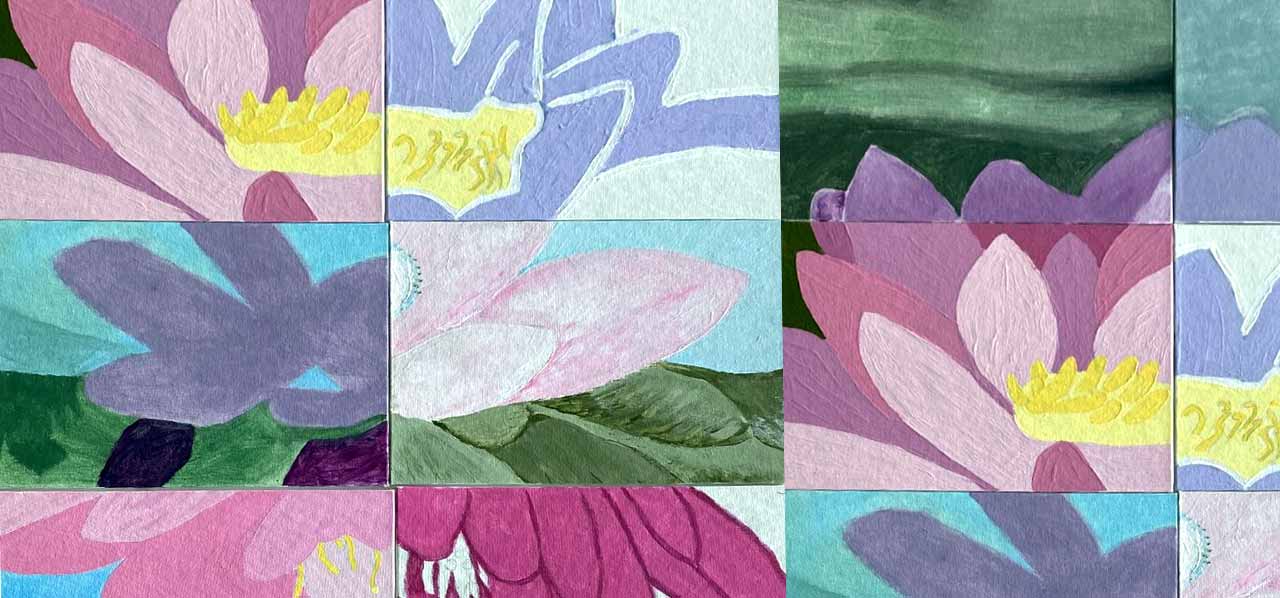
Pictured (left-right): Amber Molineaux, RN, BSN, PMHN-BC, Lisa Sabo, BSN, RN, PMHN-BC, and Danielle Jordan, RN, BSN, PMHN-BC.
The group has received a great deal of positive feedback from patients, and more recently nurses have sought to expand and complement the curriculum in creative ways.
“Our nurses have strong medical backgrounds, and in choosing the eating disorders field they are also inherently focused on empathy and hope,” says Nurse Manager Lauren Firman, MHA, BSN, RN, CNML. “They’ve been tapping into their creative minds to broaden the scope of this initiative and incorporate activities that resonate with patients. It’s been tremendous to be able to use all of those skills to provide truly holistic care, and it builds beautifully into the team approach we have on the unit.”
These creative projects facilitated by nurses serve as another tool to help patients express themselves and find meaning through that expression. They also are a visual reminder of the unique pathways to hope.

Unmasking the Barriers to Hope
Often, the fear of failure or concern about the perceptions of others can keep people from moving forward and accomplishing their goals. To explore this form of self-doubt, Lisa Sabo, BSN, RN, PMHN-BC developed a hope curriculum project using paper mâché masks procured by Firman. Patients painted the exterior of the masks to illustrate how they think others see them, and they depicted who they believe they truly are on the inside of the masks.
“Incorporating projects like these into our discussions can make hope more tangible,” says Sabo. “The artwork is something patients can hold and take with them to reflect on how to move past barriers to their goals.”

Creating a Personal Mantra
Nurses Danielle Jordan, RN, BSN, PMHN-BC, Amber Molineaux, RN, BSN, PMHN-BC, and Marissa Harris, RN, BSN, PMHN-BC recently coordinated a hope curriculum activity in which patients considered a symbol, word, or statement to serve as a reminder of hope during treatment and beyond. Patients then created salt dough tags that represented these mantras and had the opportunity to share the meaning behind their work with their peers.
“Through these activities, we remind patients that not all paths are linear and there is no perfect journey to recovery,” says Jordan. “Connecting with and owning what they’re going through can help them continue moving forward.”

Hope Can Blossom
These artistic activities have also extended to adolescent patients. Jordan and Molineaux chose a lotus flower as inspiration for a recent group project focused on the pathways to hope. Despite growing in murky conditions, the lotus opens one petal at a time to blossom into a lovely flower.
Patients were each given one black and white section of the picture, which was separated into eight squares. Communicating and collaborating with their peers, they painted their individual squares while reflecting on their ability to blossom even in the face of personal challenges. While each patient had a unique perspective in creating their portion of the flower, the pieces came together to recreate a complete picture in a striking way.
“The project helped patients understand that while flawed and different, we are all still beautiful,” says Molineaux. “The road to recovery may be rocky, but despite the bumps and curves, it can be a beautiful journey with the right support and motivation.”


